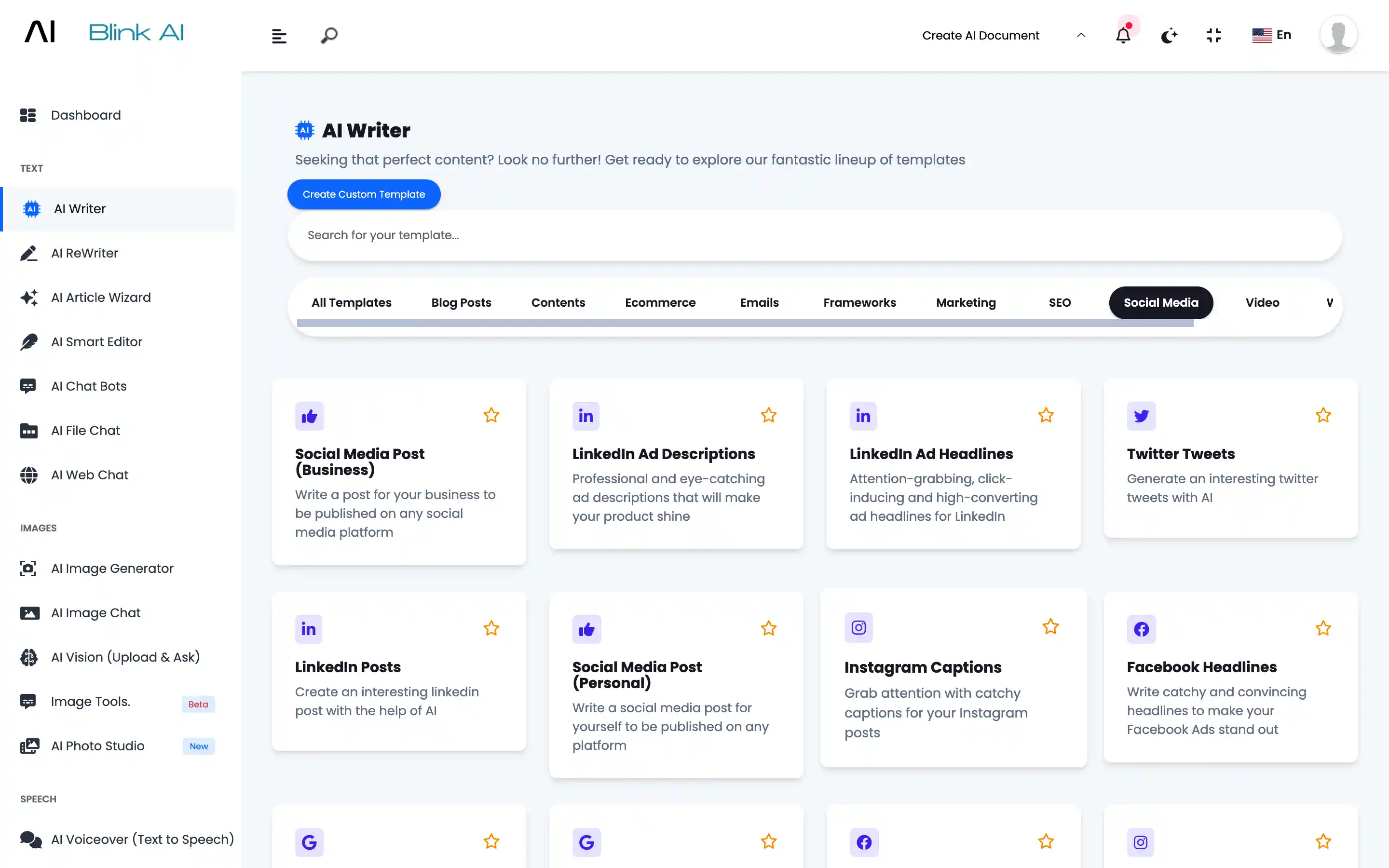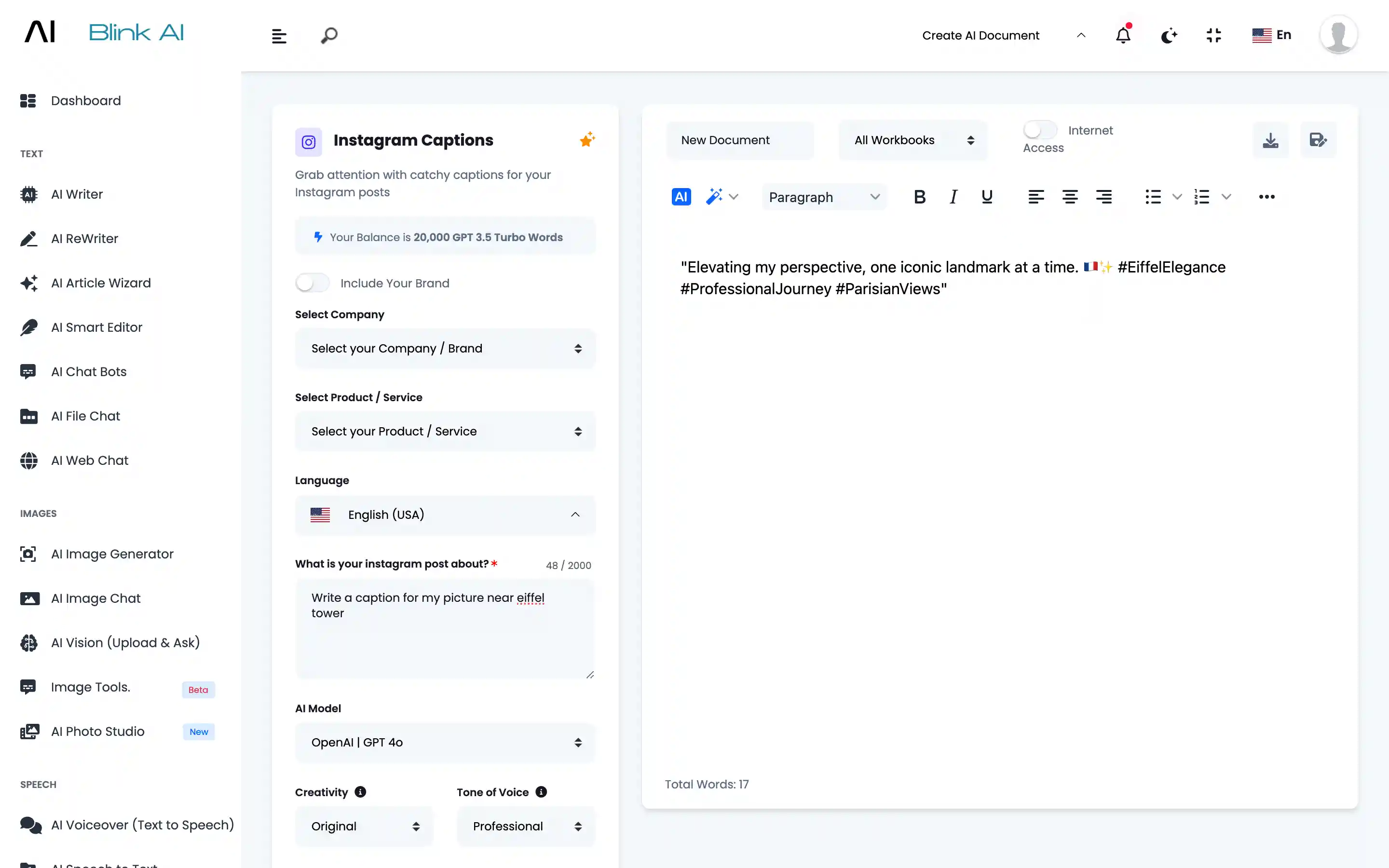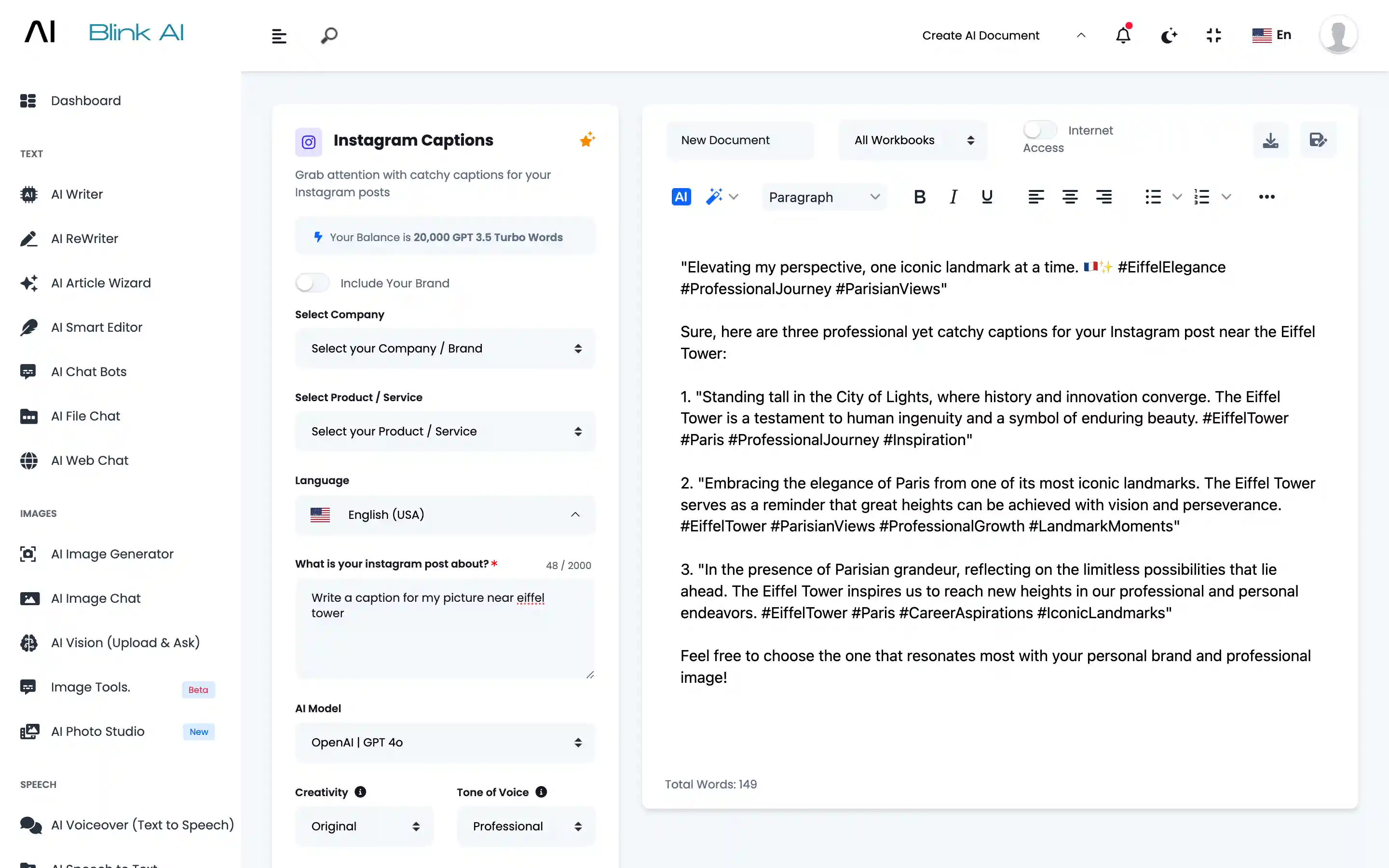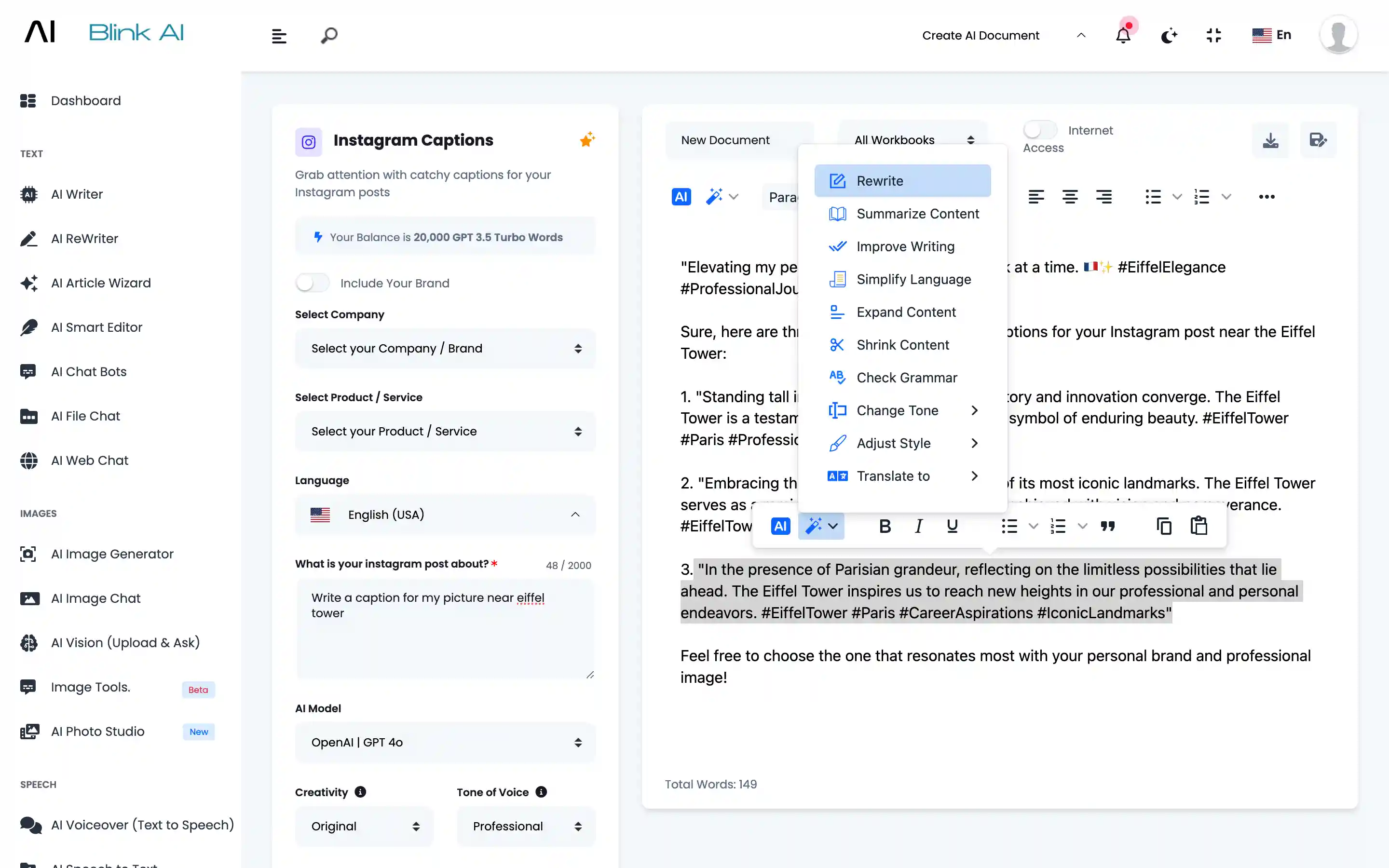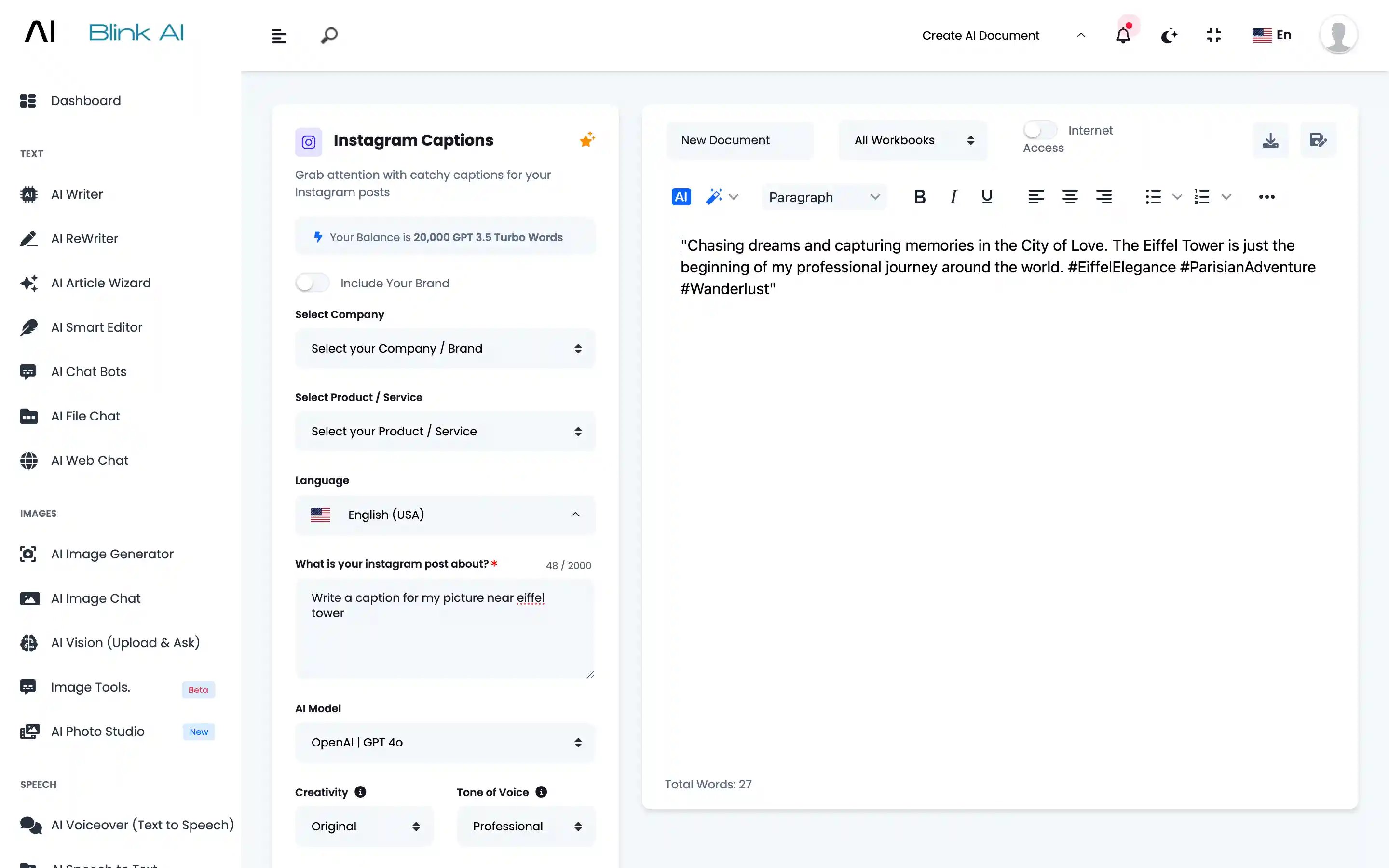Meet, BlinkAI – AI Content Generator: Text, Image, Video, Voice & Code
Privacy Policy
One platform to generate all AI contents





AI Privacy Policy
Develop a privacy policy information for your organization
About Privacy Policy
Creating a comprehensive privacy policy is essential for your organization to protect user data, ensure transparency, and comply with legal requirements. A well-crafted privacy policy builds trust with your users by clearly explaining how their personal information is collected, used, and safeguarded. Here’s a step-by-step guide on how to develop a privacy policy for your organization: Regulations: Familiarize yourself with relevant data protection laws and regulations, such as the General Data Protection Regulation (GDPR) in the EU, the California Consumer Privacy Act (CCPA) in the US, and other local or international laws. Industry Standards: Adhere to industry-specific standards and guidelines that may apply to your organization, especially if you handle sensitive data like healthcare or financial information. Personal Information: Determine what personal information you collect from users, such as names, addresses, email addresses, phone numbers, and payment information. Usage Data: Identify any non-personal data you collect, such as IP addresses, browser types, pages visited, and usage patterns. Direct Collection: Outline how you collect data directly from users, such as through forms, account registrations, surveys, and purchase transactions. Automatic Collection: Describe the use of cookies, web beacons, and other tracking technologies that automatically collect data when users interact with your website or app. Service Provision: Explain how collected data is used to provide and improve your services, such as processing transactions, delivering customer support, and personalizing user experiences. Marketing and Communication: Clarify how data is used for marketing purposes, such as sending promotional emails, newsletters, or targeted advertisements. Ensure users know how to opt-out of these communications. Third-Party Services: Identify any third parties with whom you share user data, such as payment processors, analytics providers, and marketing partners. Clearly state the purpose and scope of this data sharing. Legal Obligations: Explain circumstances under which you may disclose user data to comply with legal obligations, such as responding to subpoenas or court orders. Protection Methods: Describe the technical, administrative, and physical security measures in place to protect user data from unauthorized access, disclosure, or alteration. User Responsibilities: Encourage users to take steps to protect their own information, such as using strong passwords and keeping login credentials confidential. Access and Correction: Inform users of their rights to access, correct, or delete their personal information. Provide instructions on how to exercise these rights. Data Portability and Opt-Out: Explain users' rights to request data portability and opt-out of certain data processing activities, such as marketing communications or personalized advertising. Policy Updates: State that your privacy policy may be updated periodically and explain how users will be informed of significant changes, such as through notifications or updates on your website. Legal Review: Regularly review your privacy policy to ensure compliance with evolving laws and regulations. Consider consulting with legal experts to ensure thoroughness and accuracy. Introduction Information We Collect How We Collect Information How We Use Information Data Sharing Data Security User Rights Contact Information Policy Updates Developing a privacy policy for your organization is a crucial step in protecting user data, ensuring transparency, and maintaining compliance with legal requirements. By clearly outlining your data collection, usage, and protection practices, you build trust with your users and demonstrate your commitment to their privacy. Regularly review and update your privacy policy to adapt to changing regulations and best practices.1. Understand Legal Requirements
2. Identify the Types of Data You Collect
3. Explain Data Collection Methods
4. Describe the Purpose of Data Collection
5. Outline Data Sharing Practices
6. Detail Data Security Measures
7. Provide Information on User Rights
8. Include Contact Information
9. Review and Update Regularly
Sample Privacy Policy Outline
Conclusion
Steps for AI Writing
Start Writing Content in 3 Easy Steps
1
Step 1
AI Writer Section
Go to AI Writer section and select a template
2
Step 2
Details
Provide brief details about your requirement
3
Step 3
Generate
Generate, amend and save content
Discover AI Writer
How To Use Blink AI's AI Writer for Content Creation
Go to AI Writer Section
Choose from 70+ AI Writing Templates or Create your Own Template
Describe
You can provide details like what is the exact requirement. How many outputs you want. Which AI model you want to use.
Generate
Content will be generated based on your input.
Amend
Select the content you want to amend. Click on the Magic Wand to amend Generated Content.
Fresh Output
Fresh output will be generated. You can save it in Workbooks.
